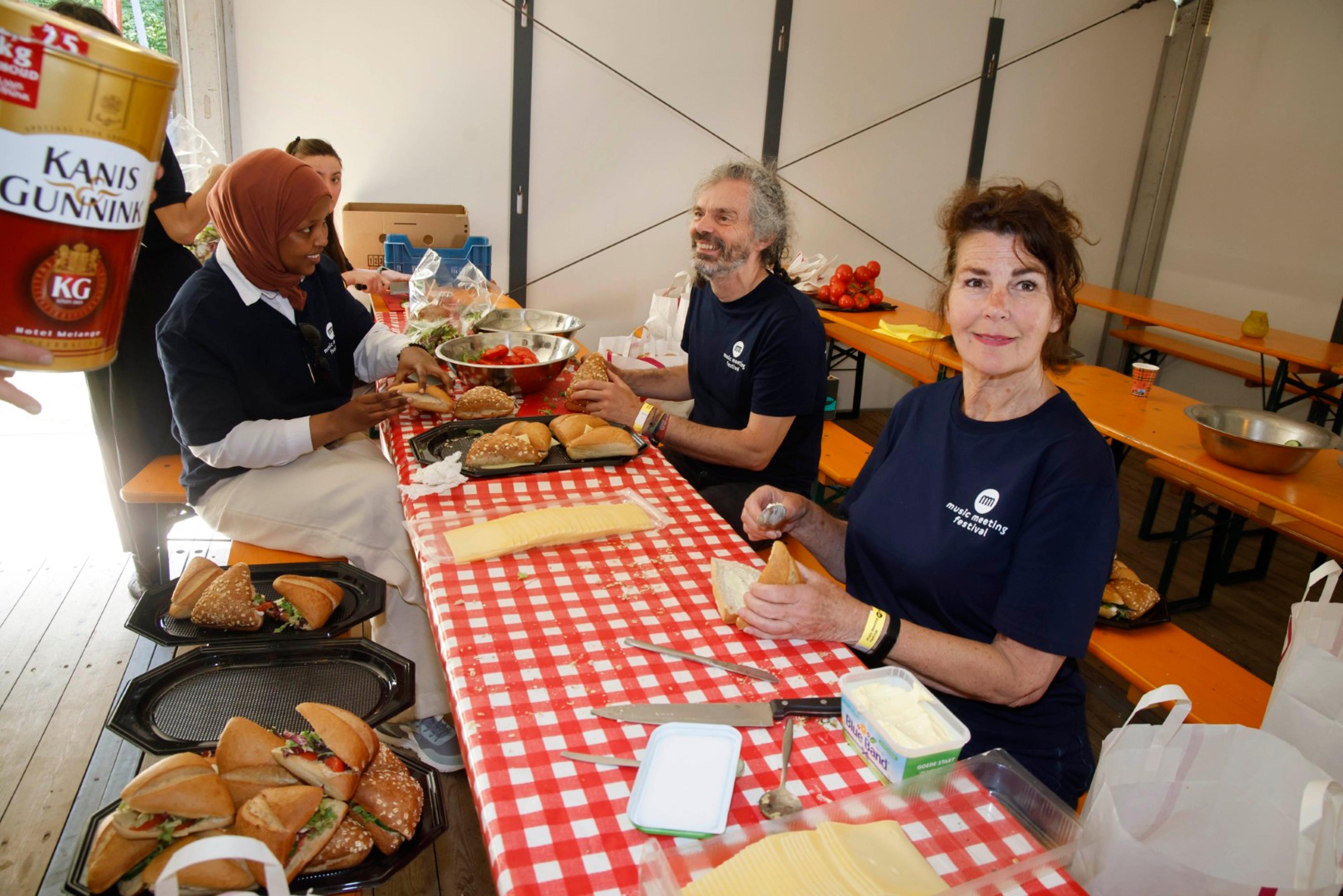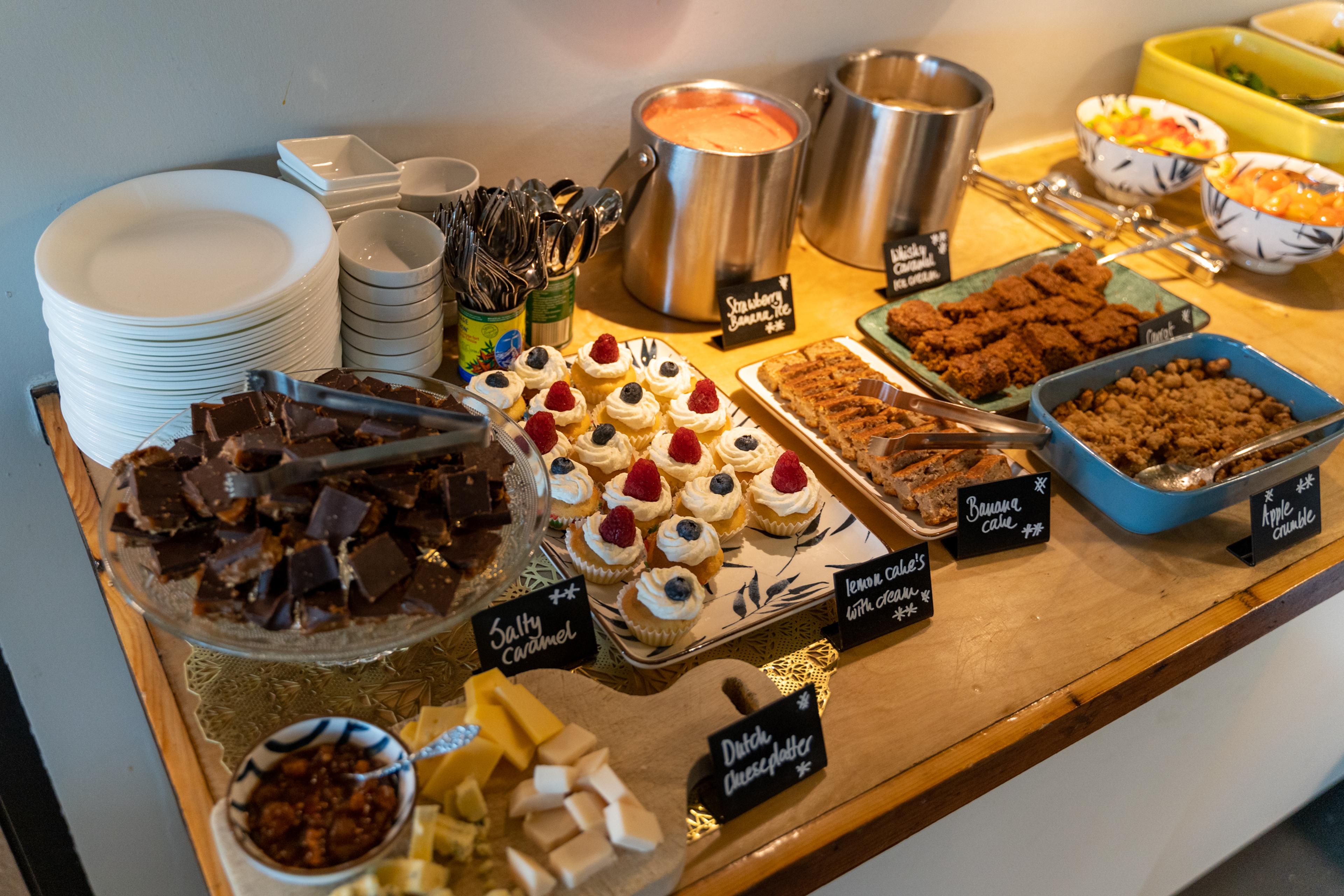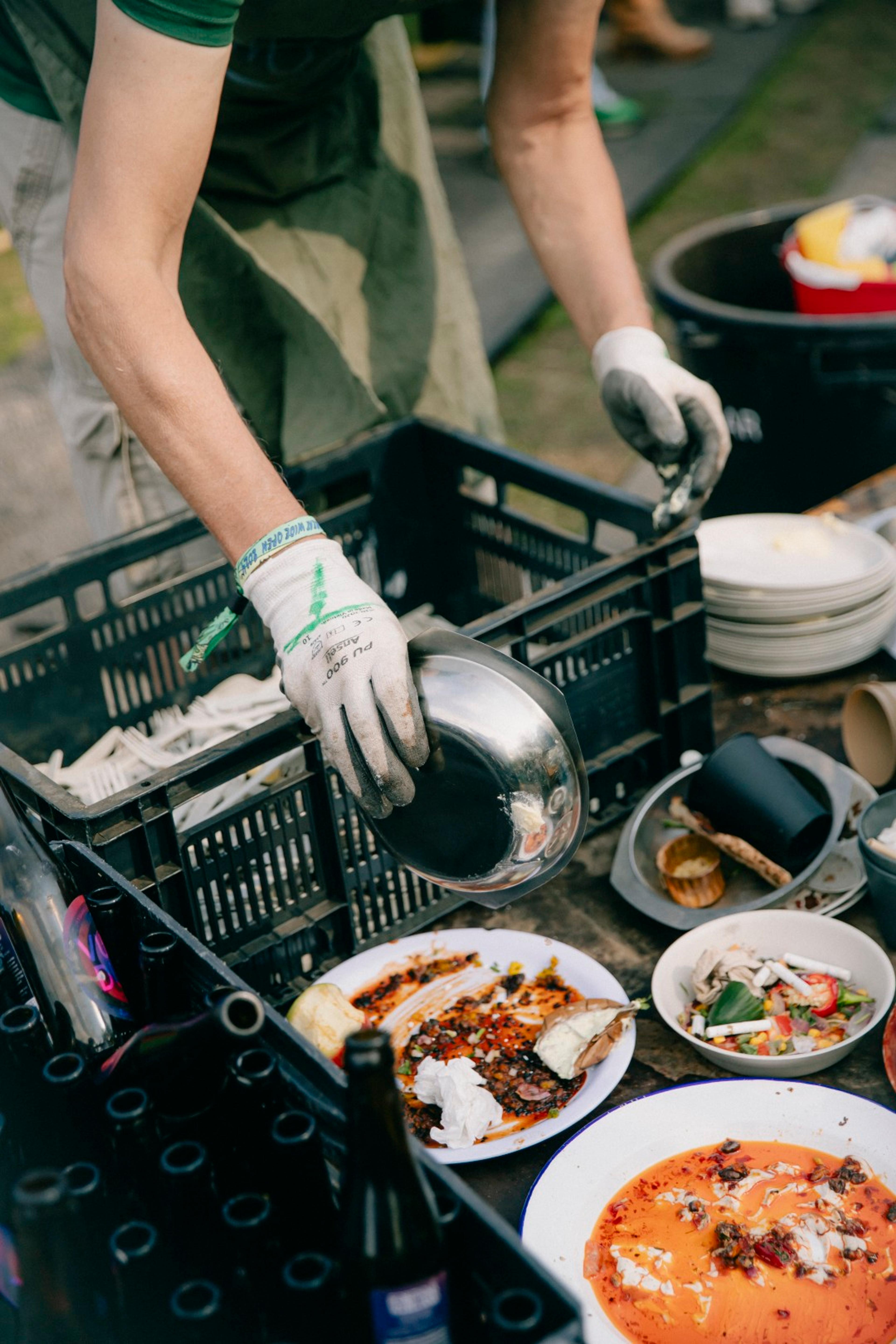
Food and drink are essential at events, but their impact on the environment is significant. From production to packaging and waste, conscious choices make a huge difference. By choosing plant-based and local foods, smart packaging and less food waste, festivals and cultural institutions can drastically reduce their impact.
In this article you will read about the right tools, regulations and communication strategies that make the transition to more sustainable eating and drinking accessible and effective.
Laws and regulations
Within the EU and the Netherlands there are stricter rules for sustainable food and beverage consumption. The EU Farm to Fork strategy sets stricter requirements for production, reduces food waste and promotes transparency about environmental impact. SUP legislation bans certain disposable plastics and forces organizers to use more sustainable alternatives. But beyond regulations, it is important for cultural institutions and events to take responsibility themselves. By making conscious choices in purchasing, menu options and packaging, they can reduce their impact and play an exemplary role in the transition to a more sustainable food system.

Develop strategy on sustainability
There is also a growing urgency in the cultural sector to contribute to a more sustainable future. But how do you tackle this concretely? In this article we look at developing a strategy on sustainability, the resources available to do this and where to find support to actually implement your plans.
Future-proof menu
A sustainable menu is all about plant-based, local and seasonal produce. Plant-based food has much lower carbon emissions than meat; a switch can reduce the climate impact of an event by dozens of percent. Tools such as Klimato make this transparent by calculating the carbon footprint of dishes. Both backstage (for artists and crew) and frontstage (for visitors), festivals and cultural institutions can use this to reduce their impact.

Communications
Yet changes in offerings often meet with resistance. Visitors and performers have certain expectations and habits around food, and a new menu may encounter skepticism. How do you ensure that a sustainable menu is not only accepted, but enthusiastically embraced? The key lies in effective communication. By applying the right strategy, you can get people curious and discover how tasty and innovative a future-proof menu can be.
- Emphasize taste and quality: Show that sustainable dishes are just as (or even more) flavorful and nutritious than traditional options. Work with chefs who develop exciting, flavorful dishes and use terms that emphasize culinary value rather than highlighting sustainability.
- Make it appealing and relatable: Avoid loaded terms like "vegan" or "sustainable" if it evokes resistance. Use creative names and appealing descriptions, such as "savory vegetable burger with artisanal spices" instead of "vegan burger."
- Use social proof: Have artists, visitors or well-known industry names tell about their positive experience with the sustainable menu. Testimonials and personal experiences inspire trust and enthusiasm.
- Be transparent about impact: Make transparent how much carbon emissions or water consumption is saved by choosing a plant-based meal.
- Engage visitors and artists: Make sustainability interactive. Let people vote on new dishes, organize tastings or offer discounts on sustainable choices. This increases engagement and encourages behavioral change.
Local and seasonal produce also play an important role. Relying less on imported ingredients and working with local producers reduces transportation emissions and keeps food fresher. This not only makes it more sustainable, but often tastier.

💡 Tip: Organize tastings of sustainable dishes so visitors can experience for themselves how delicious and versatile plant-based food is. For example, Monkey Cage Events has partnered with Beyond Meat to offer more plant-based and sustainable food options at their festivals. This way they reduce climate impact and make vegetarian food more accessible to a wide audience.
Reducing food waste
Food waste is a major environmental problem. In the Netherlands, households waste an average of 33.4 kilograms of solid food per person annually(Milieu Centraal). This amounts to about 9% of the food purchased and represents a value of about €138 per person. This is not only wasting resources and energy, but also contributes to CO₂ emissions. Events and cultural institutions can respond to this by applying smart strategies to minimize waste.
Smart tools and apps can help make food more efficient. For example, Too Good To Go offers a platform where leftover meals are discounted instead of thrown away. This is an effective way for festivals and catering establishments to reduce food waste while generating additional revenue.

Sustainable use of materials and water
With a growing world population and increasing demand for products and resources, sustainable materials and water management is becoming an increasingly important issue. This article offers insight into strategies, measurement tools and examples for more sustainable material and water use.
In addition to technology, there are several strategies to reduce waste:
- Smart purchasing planning: purchase based on reservations and previous sales data to avoid surpluses.
- Creative menu design: use leftover produce in new dishes, such as soup made from leftover vegetables.
- Portion control: serve smaller portions by default with the option to order side.
- Raise awareness among visitors and staff: inform about the impact of food waste and encourage conscious choices.
Packaging material
Reducing disposable plastic is an important part of sustainable eating and drinking at events and cultural institutions. The Single Use Plastics (SUP) legislation in place within the EU bans certain types of disposable plastic and requires organizers to use more sustainable alternatives. This means festivals and hospitality venues must switch to reusable or biodegradable packaging.
Reusable tableware during the Four Day Festivities
Reusable tableware was tested for the first time during the 2025 Four Day Festivities - a successful step toward a circular future. With a 92% return rate, the pilot shows how collaboration and smart logistics can greatly reduce waste at large events.

Reusable tableware during the Four Day Festivities
A festival snack on a real plate instead of disposable plastic or cardboard - it sounds like a small change, but the effect is big. During the 2025 Vierdaagsefeesten, the first test of reusable tableware was conducted at De Kaaij Hoog. The trial is part of the organization's ambition to be fully circular by 2050. The results? A high return rate, a lot of enthusiasm and valuable lessons for other organizers.
The sustainable mission of Into The Great Wide Open
Into The Great Wide Open aims to be a fully circular and climate-positive festival. This means that all materials are reused, recycled or composted, and that more net CO₂ is captured than emitted. By 2024, the festival was running 95% on local solar power, thanks in part to a green hydrogen generator. In addition, emission-free construction equipment was used and residual waste production dropped to just 50 grams per visitor per day. An important contribution to this waste reduction is the use of 100% reusable crockery, with visitors returning their crockery after use to collection points for cleaning and reuse.
